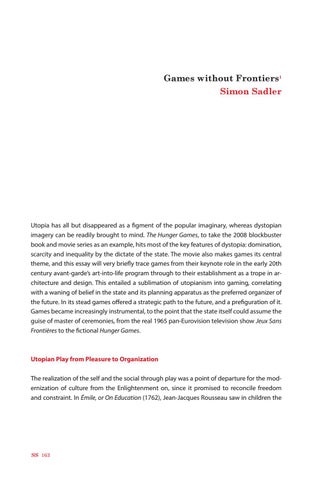Games without Frontiers1 Simon Sadler
Utopia has all but disappeared as a figment of the popular imaginary, whereas dystopian imagery can be readily brought to mind. The Hunger Games, to take the 2008 blockbuster book and movie series as an example, hits most of the key features of dystopia: domination, scarcity and inequality by the dictate of the state. The movie also makes games its central theme, and this essay will very briefly trace games from their keynote role in the early 20th century avant-garde’s art-into-life program through to their establishment as a trope in architecture and design. This entailed a sublimation of utopianism into gaming, correlating with a waning of belief in the state and its planning apparatus as the preferred organizer of the future. In its stead games offered a strategic path to the future, and a prefiguration of it. Games became increasingly instrumental, to the point that the state itself could assume the guise of master of ceremonies, from the real 1965 pan-Eurovision television show Jeux Sans Frontières to the fictional Hunger Games.
Utopian Play from Pleasure to Organization The realization of the self and the social through play was a point of departure for the modernization of culture from the Enlightenment on, since it promised to reconcile freedom and constraint. In Émile, or On Education (1762), Jean-Jacques Rousseau saw in children the
SS 163
